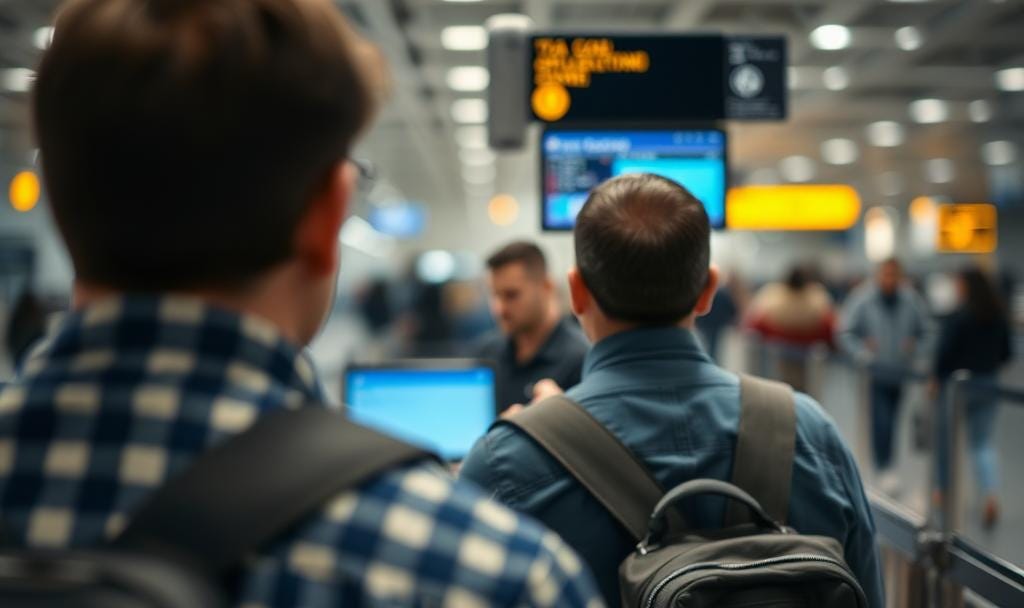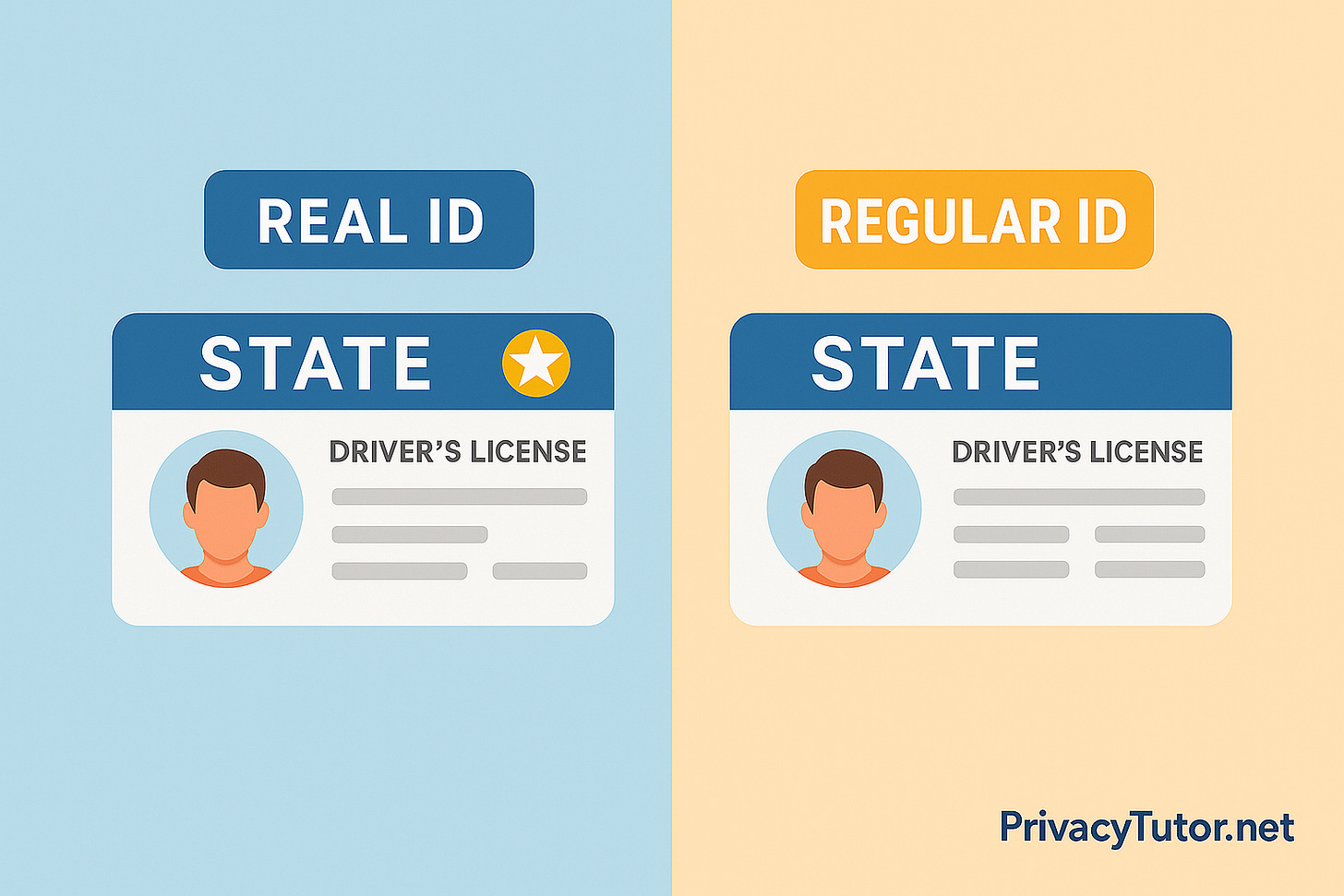You ever walk into a situation and realize after the fact that maybe you gave up more than you meant to? Like when you say “yes” to a free sample and walk out with a $30 tub of anti-aging goat lotion? That was me, but instead of goat lotion, it was my face.
I was at the airport, rushing through security like a normal, semi-stressed traveler. I paused at what I thought was a faster lane, stared into a camera, and moved on. Only later did I spot a small sign that said, “facial recognition is optional.” Thanks for the heads-up, TSA. Apparently, I had just opted into biometric surveillance without realizing it.
This got me thinking: if so many of us are walking blindly into these programs, what else are we agreeing to without knowing it? Enter: REAL ID.
Let’s break it all down—what it is, why it exists, and whether it's something you actually need or just another bureaucratic hoop to jump through. Spoiler: the answers are not as straightforward as you might think.
What in the World Is REAL ID?
Imagine your driver’s license got a security upgrade and a paranoia boost. That’s basically a REAL ID.
It all started with the REAL ID Act of 2005, passed in the wake of 9/11. The idea was to tighten ID standards, so terrorists couldn't just waltz in with fake licenses. Since then, states have been slowly rolling out these federally-approved IDs.
Why does it exist? Because the government wanted to make sure your license is more than just a laminated piece of “trust me, I’m John” paper.
Why is it required? Starting May 7, 2025, if you want to fly domestically or enter some federal buildings, you’ll need a REAL ID or an alternative like a passport.
Takeaway: It’s not just a fancy license. It’s your ticket to domestic flights... unless you’re into trains now.
Do You Already Have One?
Here’s the trick: you might already have a REAL ID and not know it. Check your driver’s license. See a gold star or little flag? That’s it. You’re in the club.
If not, you’ll need to upgrade. The process isn’t wild—just more paperwork than you wanted and a trip to the DMV. Who doesn’t love a good day at the DMV?
Kids under 18 don’t need one to fly, as long as the adult they’re with has one. So now you get to be the responsible one.
Takeaway: No star = no fly (unless you have a passport or one of those elite traveler cards).
Let’s Talk About the Creepy Stuff: Privacy Concerns
REAL ID isn’t inherently evil, but the privacy red flags are waving like it’s a windy day at the beach.
Data Overload: To get one, you hand over multiple documents: birth cert, Social Security card, utility bills… basically your life story.
Centralized Databases: These documents live in state systems that might not be ready for prime time cybersecurity-wise.
Mission Creep: Today it's for flying. Tomorrow? Who knows. Buying cold medicine? Voting? Entering a bar?
No Undo Button: Once you’ve upgraded, getting rid of it is like trying to return a tattoo.
Groups like the ACLU and EFF have been sounding the alarm for years, warning that this could quietly become a national ID program.
Takeaway: If you’re someone who doesn’t like the idea of all your data sitting in one place, maybe hold off.
Don’t Want It? Here Are Your Options
The good news? You don’t have to get a REAL ID to fly.
Here are the TSA-approved alternatives:
U.S. Passport or Passport Card
Global Entry, NEXUS, SENTRI cards
Permanent Resident Card
U.S. Military ID
So if you already travel internationally, you might be set.
Takeaway: REAL ID isn’t the only game in town. You’ve got options, friend.
Changed Your Mind? Can You Ditch a REAL ID?
Short answer: yes. Long answer: yes, but bring snacks.
You can downgrade to a standard license, but it means going back to the DMV, re-submitting documents, and probably paying a fee. Not all states make this easy.
Takeaway: Think before you star-upgrade. It’s easier to say no now than backpedal later.
Is REAL ID Useful for Anything Else?
Beyond flying and getting into certain federal buildings, there are not a lot of extra perks.
You don’t need it to:
Vote
Drive
Rent a car
Buy a drink
Takeaway: It’s not an all-access pass. Just a specific-use key.
Does REAL ID Prove You’re a U.S. Citizen?
Nope. Not even a little.
Non-citizens can get a REAL ID too, using their valid immigration documents. It’s not about proving citizenship—it’s about proving you are who you say you are right now.
Takeaway: Don’t use REAL ID as a stand-in for a passport or proof of citizenship. It’s not built for that.
Bottom Line: Protect Your Privacy Like You Protect Your Wi-Fi Password
Getting a REAL ID might not be the end of the world. But if you’re privacy-minded, it’s worth asking: Is this a security upgrade or a surveillance shortcut?
And when you throw in airport facial recognition programs that feel more like silent opt-ins than informed choices? It’s time to stay alert.
Use a VPN when you travel. Ask questions. And most importantly, read the fine print before you give your face to a kiosk.




